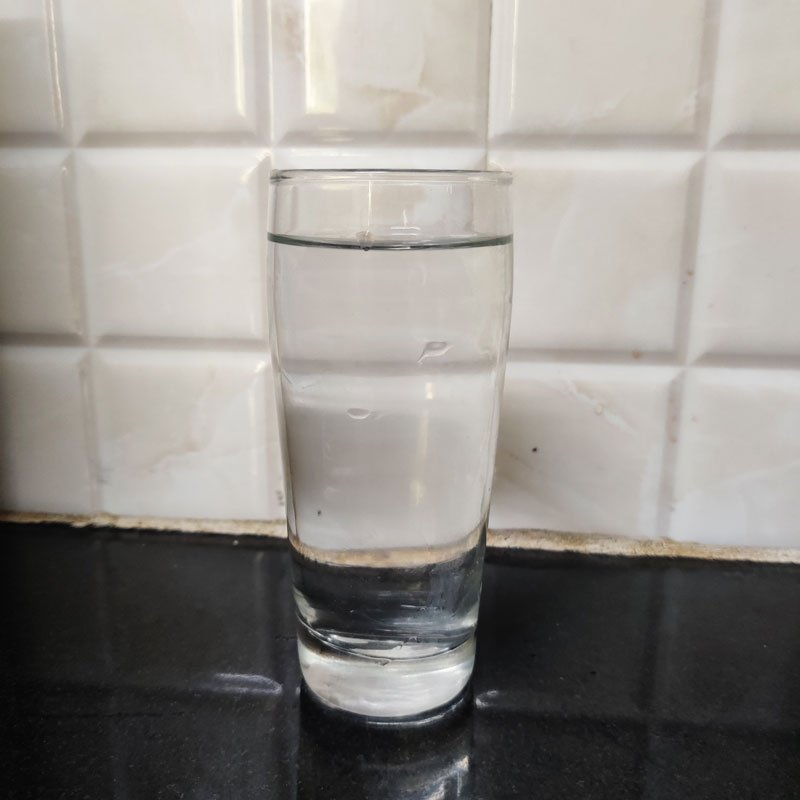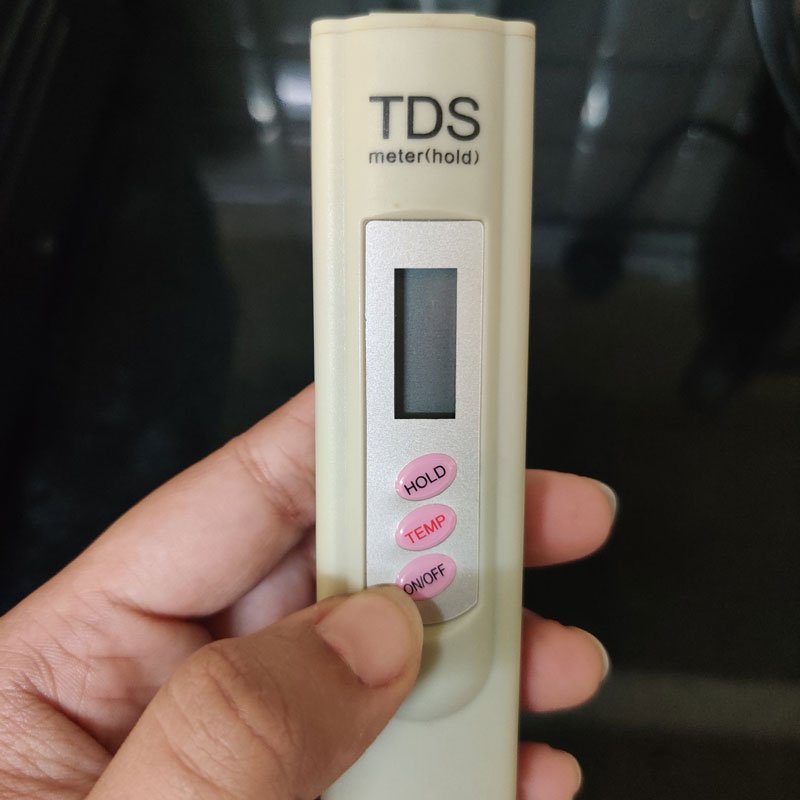TDS refers to Total Dissolved Solids. It provides an excellent indication of the level of impurity in water. However, the value is not an absolute indicator of the water quality either. We will discuss it in detail in the later sections of this article. First, let us take a look at what TDS is and what are the components of TDS.
What is TDS?
TDS, as mentioned, refers to Total Dissolved Solids.
Water typically consists of both dissolved and undissolved solids. Sand, metals like arsenic, lead, iron etc, are the undissolved solids in water. The dissolved solids are calcium, magnesium, nitrates, sulfates, carbonates, fluorides, etc. Some of these dissolved solids are useful for human health, while others can be harmful at high levels. Here is a table of the acceptable level of various dissolved solids in water.
| Component | Acceptable Limit |
|---|---|
| Calcium | 75 mg/L |
| Chloride | 250 mg/L |
| Fluoride | 1 mg/L |
| Magnesium | 30 mg/L |
| Nitrate | 45 mg/L * |
| Sulphide | 0.05 mg/L * |
| Sulphate | 200 mg/L |
| Total Hardness ( CaCO3) | 200 mg/L |
| Cadmium | 0.003 mg/L* |
| Lead | 0.01 mg/L* |
Note that this list is not exhaustive. The complete details can be found on IS 10500 : 2012 Indian Drinking Water Specification.
Acceptable TDS Levels
The maximum TDS level acceptable as per the Indian Drinking Water Specifications is 500 mg/L. Most RO water purifier manufacturers recommend keeping TDS at a level of 50-150 mg/L. However, we do not recommend solely depending on TDS levels to assess drinking water quality. We will discuss it in detail in the next section.
Why You Shouldn’t Depend On Just TDS To Analyze Drinking Water Quality?
Recently, my daughter had a case of vomiting. A few days later, when talking with a few neighbors, many other small kids too had similar cases of vomiting and diarrhea. Being summer, as borewell water isn’t enough, the apartment depends on water tankers. They get water from a lakeside. As the apartment has a centralized RO plant, they test the water frequently to ensure it meets the parameters. The recent test found that every parameter including the TDS of the treated water was within limits. But, the water was found to have Coliform. Needless to say, the committee advised boiling water to prevent any further outbreak of diarrhea and vomiting.
The whole apartment would have suffered if the committee looked just at the TDS as the parameter to assess water quality. It is not just bacteria and viruses that could exceed the limits. Other factors like fluoride, nitrate, sulfate, etc too could be above acceptable limits in your place. Don’t think it is an unlikely situation because as per studies, around 85% of underground water is highly polluted.
Hence, you should periodically do a lab test of your drinking water to ensure all the parameters are within limits.
How To Check TDS At Home?
Time needed: 3 minutes
A TDS meter is all you need to check the TDS level of your water. A TDS meter can be bought on Amazon and is usually available for less than Rs. 300. TDS meters usually have an accuracy level of +or -2% and can be tested on the water at temperatures ranging from 1 to 80C.
- Collect Water
Collect the water that needs to be tested in a clean glass. Ideally, discard the first few drops that come out of the faucet and then collect the water. This way, any deposits or contaminants in or around the faucet won’t alter the reading. Then, let the water settle.
- Switch On The TDS Meter
Open the cover of the TDS meter and switch it on. Then, dip the probe of the TDS meter into the water.
- Note The Reading
Press the Hold button on the TDS meter and record the reading in the TDS meter. Repeat the test for 2-3 times so that you can be sure the reading is accurate.
Note that most TDS meters can record only up to 999 mg/L.
Why Other TDS Checking Methods Aren’t Always Practical?
Technically, there are other methods to find the TDS of water. The first method is a gravimetric method and the next is using the Electrical Conductivity method. However, these are complicated methods that require a lot of calculations and expensive measuring devices. Considering that you can buy a TDS meter for just Rs.300 or less, it is highly recommended that you opt for this method.
How To Reduce TDS In Your Drinking Water?
Reverse Osmosis (RO) is the only method using which TDS can be reduced at home. Other methods are-
Distillation, whereby water is boiled and pure vapors are collected and the leftover residue is discarded;
Deionization, whereby water is passed through electrodes so that the ions get deposited at the electrodes resulting in pure water.
Reverse Osmosis ( RO) is a membrane found in water purifiers. It contains pores of size less than 0.0001 microns. Water is forced through this membrane using a pump. The membrane collects all contaminants including dissolved solids. These solids are flushed out of the membrane as wastewater from the RO. And purified water comes out through the faucet.
Does Boiling Reduce TDS?
Boiling doesn’t reduce TDS. In fact, it may sometimes increase the TDS of the water. The water vapour that rises from boiling water is pure water. Pure water escapes while the dissolved solids remain in the water. When a considerable quantity of pure water evaporates, the TDS remaining in the water will be concentrated. As a result, the TDS of the water will increase rather than decrease.



